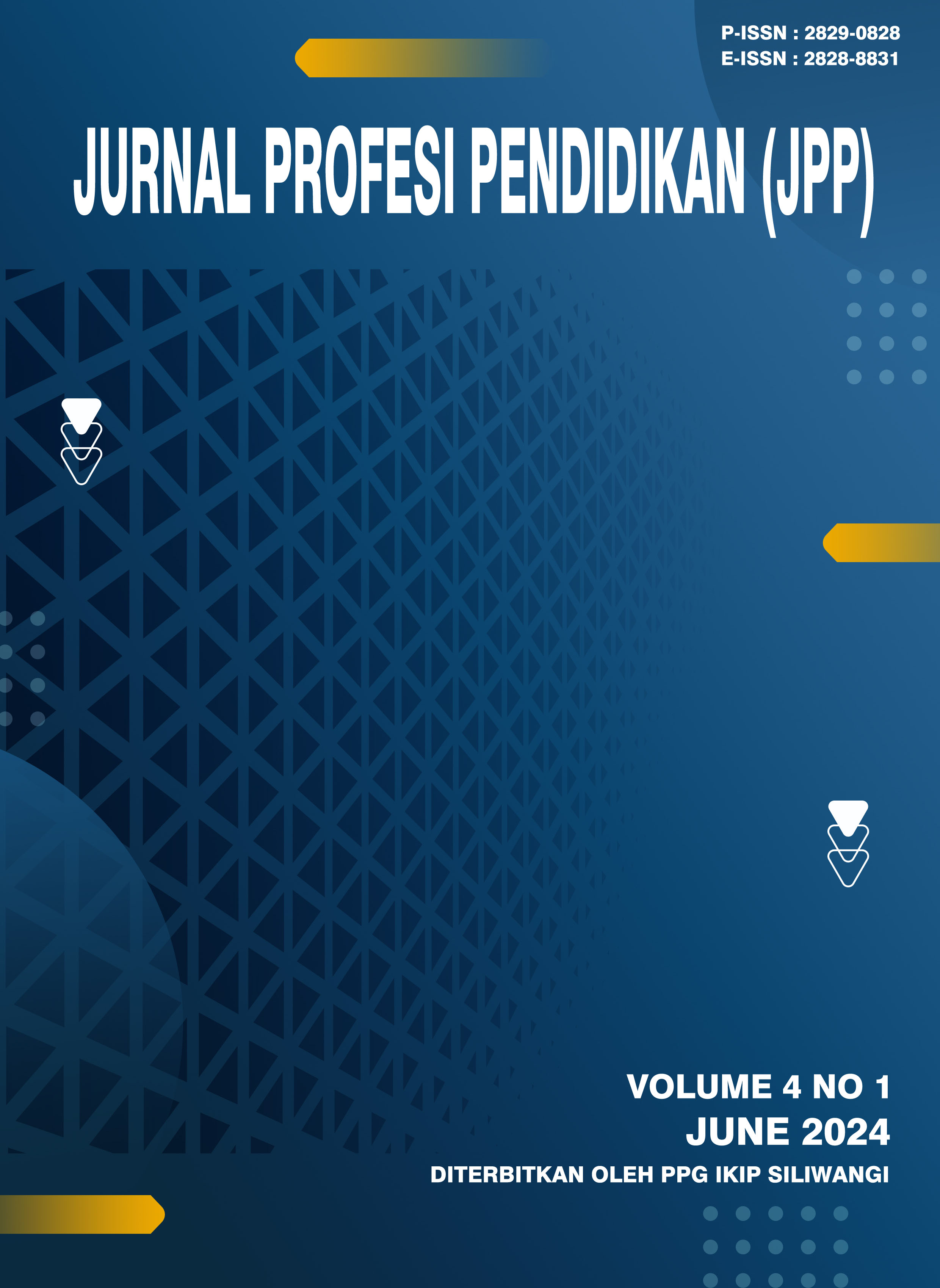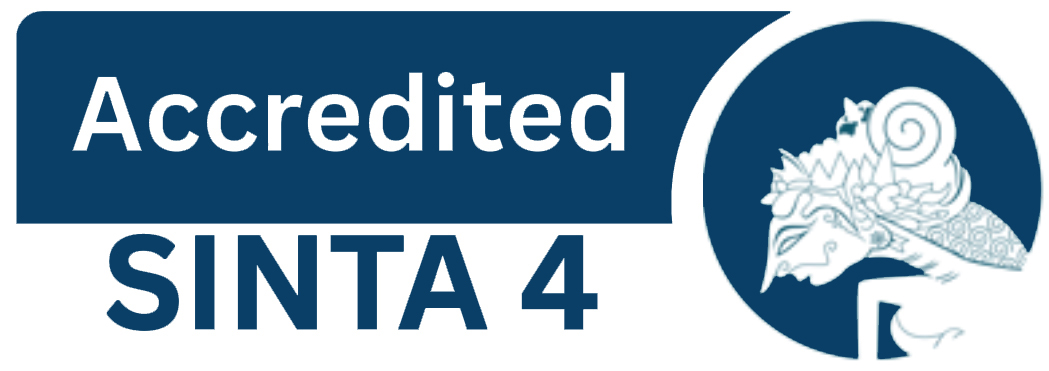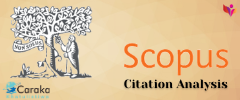Analysis of Students' Misconceptions On The Characteristics of Flat Shapes Using Two-Tier Multiple-Choice Diagnostic Test in Grade V Elementary School
DOI:
https://doi.org/10.22460/jpp.v4i1.27341Keywords:
Two-Tier Model, Misconceptions, Diagnostic TestAbstract
This study aimed to identify students' misconceptions regarding the characteristics of flat shapes in mathematics learning, using a two-tier multiple-choice diagnostic test instrument. This research employs a descriptive qualitative approach. The subjects of this study were fifth-grade elementary school students, totaling 25 students. The data used in this study are observation results, two-tier diagnostic test results, diagnostic interviews with students, and documentation. The data analysis method used includes data reduction, data presentation, and conclusion drawing. The validation results indicate that the two-tier diagnostic test instrument meets the criteria for validity and feasibility, achieving an average total score of 43 out of a possible 44, which reflects a positive response; thus, the instrument is highly suitable for use in the field. The results indicated that among grade V elementary school students learning about the characteristics of flat shapes, 29.40% demonstrated complete understanding of the concept, while various types of misconceptions were identified: 10.00% had positive misconceptions (false positives), 7.40% had negative misconceptions (false negatives), 7.80% had pure misconceptions, 12.10% guessed answers, and 15.20% and 17.80% did not understand the concept at all.
References
Agustyarini, Y., & Ningrum, R. W. (2023). Miskonsepsi siswa SMP dalam memahami ciri-ciri bangun segi empat. Chalim Journal of Teaching and Learning, 3(2), 95–102.
Ainiyah, L. A. (2016). Identifikasi miskonsepsi siswa dalam materi geometri pada pembelajaran matematika siswa kelas V sekolah dasar III SMP Negeri 1 Punggelan. Jurnal Pendidikan Matematika, 5(1).
Arikunto, S. (2015). Dasar-dasar Evaluasi Pendidikan. Jakarta: Bumi Aksara.
Arslan, H. O., Cigdemoglu, C., & Moseley, C. (2012). A three-tier diagnostic test to assess preservice teacher misconceptions about global warming, greenhouse effect, ozone layer depletion, and acid rain. International Journal of Science Education, 34(11), 1667-1686.
Chandrasegaran, A. L., Treagust, D. F., & Mocerino, M. (2007). The development of a two-tier multiple choice diagnostic instrument for evaluating secondary school students' ability to describe and explain chemical reactions using multiple levels of representation. Journal of Chemistry Education Research and Practice, 8(3), 293-307.
Depdiknas. (2007). Pedoman pengembangan tes diagnostik mata pelajaran IPA SMP/MTS. Jakarta: Ditjen Manajemen Pendidikan Dasar dan Menengah.
Elisahaya, & Imami, A. I. (2019). Analisis kemampuan koneksi matematis peserta didik pada materi segiempat. Prosiding Seminar Nasional Matematika Dan Pendidikan Matematika Sesiomadika 2019, 53–61.
Gita, A., Murnaka, N. P., & Sukmawati, K. I. (2018). Penerapan model pembelajaran conceptual understanding procedures (cups) sebagai upaya mengatasi miskonsepsi matematis siswa. Journal of Medives : Journal of Mathematics Education IKIP Veteran Semarang, 2(1), 65–76.
Hidayah, I. S., & Fitriani, N. (2021). Analisis kesulitan siswa smp kelas vii dalam memahami materi segiempat dan segitiga dalam pembelajaran daring. Jurnal Pembelajaran Matematika Inovatif, 4(3), 631–642.
Mubarak, S., Susilaningsih, E., & Cahyono, E. (2016). Pengembangan tes diagnostik three tier multiple choice untuk mengidentifikasi miskonsepsi peserta didik kelas XI. Journal of Innovative Science Education, 5(2). Universitas Negeri Semarang. Diakses dari http://journal.unnes.ac.id/sju/index.php/jise.
Mufidah, I., & Budiarto, M. T. (2018). Miskonsepsi siswa SMP dalam memahami konsep bangun datar segiempat ditinjau dari gaya belajar vak. MATHEdunesa Jurnal Ilmiah Pendidikan Matematika, 2(7), 232-239.
Natalia, T., Karolin, & dkk. (2016). Miskonsepsi pada penyelesaian soal aljabar siswa kelas v sekolah dasar berdasarkan proses berpikir mason. Jurnal Pendidikan, 1(10).
Ningrum, R. W., & Budiarto, M. T. (2016). Miskonsepsi siswa SMP pada materi bangun datar segiempat dan alternatif mengatasinya. MATHEdunesa Jurnal Ilmiah Pendidikan Matematika, 1(5), 59-66.
Nurkamilah, P., & Afriansyah, E. A. (2021). Analisis miskonsepsi siswa pada bilangan berpangkat. Mosharafa: Jurnal Pendidikan Matematika, 10(1), 49-60.
Suparto, S., Kusaeri, K., & Ningsih, A. (2022). Pengembangan four-tier diagnostic test untuk mengidentifikasi miskonsepsi materi segitiga. Transformasi: Jurnal Pendidikan Matematika dan Matematika, 6(1), 61–74.
Sugiyono. (2016). Metode penelitian kuantitatif, kualitatif,dan R&D. Bandung: Alfabeta.
Sutiarso, S., & Coesamin, M. (2013). Identifikasi kesalahan matematis siswa kelas v sekolah dasar sekolah dasar dalam geometri. Jurnal Pendidikan MIPA Universitas Lampung, 14(1), 33-38.
Treagust, D. F. (1995). Development and use of diagnostic test to evaluate students' misconceptions in science. International Journal of Science, 10(2), 159-169.
Tüysüz, C. (2009). Development of two-tier instrument and assess students’ understanding in chemistry. Scientific Research and Essay, 4(6), 626-631.
Wahyudi, A., Dwi Agustin, R., Ambarawati, M., & Utomo, I. B. (2022). Pengembangan media aplikasi geotri pada materi geometri berbasis mobile learning. Jurnal Ilmiah Matematika Realistik (JI-MR), 3(2), 62–70.
Downloads
Published
How to Cite
Issue
Section
License
Copyright (c) 2025 Fattya Rosyada, Nurul Ikhsan Karimah

This work is licensed under a Creative Commons Attribution-ShareAlike 4.0 International License.
Authors who publish with the Journal Pendidikan Profesi (JPP) agree to the following terms:
- Authors retain copyright and grant the journal the right of first publication with the work simultaneously licensed under a Creative Commons Attribution License (CC BY-SA 4.0) that allows others to share the work with an acknowledgment of the work's authorship and initial publication in this journal.
- Authors are able to enter into separate, additional contractual arrangements for the non-exclusive distribution of the journal's published version of the work (e.g., post it to an institutional repository or publish it in a book), with an acknowledgment of its initial publication in this journal.
- Authors are permitted and encouraged to post their work online (e.g., in institutional repositories or on their website) prior to and during the submission process, as it can lead to productive exchanges, as well as earlier and greater citation of published work. (See The Effect of Open Access)
Similar Articles
- Mariani Surtiningsih, Penerapan Model Jigsaw Pada Materi Senyawa Karbon Turunan Alkana Untuk Meningkatkan Hasil Belajar Siswa SMA , Jurnal Profesi Pendidikan: Vol. 2 No. 2 (2023): December
- Mira Astria, Ryan Dwi Puspita, Application of Humanistic Theory Assisted by Deep Learning in Science Learning Grade 4 SDN 108/1 Sungai Rumbai , Jurnal Profesi Pendidikan: Vol. 4 No. 1 (2025): June
- Maya Hilma Khoirunnisa, Diana Ermawati, Imada Khairunisa, Increasing Interest in Learning Mathematics Through the Technological Pedagogical and Content Knowledge (TPACK) Approach in Grade II Elementary School Students , Jurnal Profesi Pendidikan: Vol. 4 No. 1 (2025): June
- Siti Tazkiyah, Evi Karlina Ambarwati, Mengeksplorasi Penggunaan Strategi Metakognitif Terhadap Pemahaman Membaca Teks Berbahasa Inggris Pada Siswa SMP Di Daerah Tertinggal , Jurnal Profesi Pendidikan: Vol. 1 No. 2 (2022): December
- Ayu Aisyah Fadillah, Asep Sukenda Egok, Novianti Mandasari, Pengembangan Media Bola Hitung Berbasis Montessori Pada Pembelajaran Matematika Materi Penjumlahan dan Pengurangan Kelas II MI Nurul Islam Lubuklinggau , Jurnal Profesi Pendidikan: Vol. 1 No. 2 (2022): December
- Muh Ganjar Lugina, Yuni Artiani, Pengaruh Pendekatan Matematika Realistik Terhadap Kemampuan Koneksi Matematis Siswa Sekolah Dasar , Jurnal Profesi Pendidikan: Vol. 1 No. 1 (2022): June
- Hurul Ain, Ade Siti Haryanti, Ridhowati, The Influence of Audio-Visual Advertising Media on the Ability to Write Persuasive Texts of Class VIII Students of SMP Negeri 9 East Jakarta , Jurnal Profesi Pendidikan: Vol. 4 No. 1 (2025): June
- Nuraini Nuraini, Camellia Camellia, Maimun Maimun, The Implementation of Culturally Responsive Teaching (CRT) Approach to Improve Learning Outcomes and Learning Motivation of Grade XI.3 Students at SMA Negeri 1 Palembang , Jurnal Profesi Pendidikan: Vol. 4 No. 1 (2025): June
- Riska Agni Rahayu, Ruli Setiyadi, Evi Susanti, Pengembangan Bahan Ajar Materi Laporan Wawancara dengan Menggunakan Pendekatan Open Ended Berbantuan Video untuk Meningkatkan Kemampuan Menyimak dan Menulis Kelas IV SD , Jurnal Profesi Pendidikan: Vol. 1 No. 2 (2022): December
- Inthan Nenditha, Jajang Bayu Kelana, Pengembangan Media Pembelajaran Powerpoint Interaktif Untuk Meningkatkan Kemampuan Pemahaman Konsep IPA Siswa Kelas IV SDP Al- Basyariah , Jurnal Profesi Pendidikan: Vol. 2 No. 2 (2023): December
You may also start an advanced similarity search for this article.
















